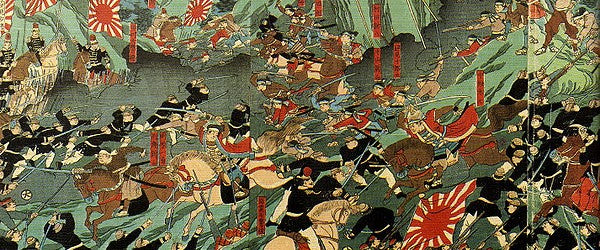Image: Battle of Shiroyama (24 September 1877), Unknown artist
The year of 2018 marks the 150th anniversary of the Meiji Restoration. For those that don’t know, the Meiji Restoration, to put it simply, was a revolution to modernize and change Japan from a closed country to an open border country in order to protect itself from outside threats.
During this time, Japan made great strides in globalization and industrialization. The Meiji Industrialization even became World Heritage. This change helped pushed Japan into the manufacturing machine that we all know today. However, while, many values and traditions were protected, some things did have to be sacrificed. One of the major losses was the samurai class.
To tell the story of these somber events, NHK (Japan’s national public broadcasting) choose the story of Takamori Saigo for their annual history TV drama series and to celebrate the 150th anniversary.
If you are a follower of my articles, you’ll have heard of Saigo before. He is a local hero of Kagoshima known throughout Japan for his actions in the mid-1800s. His life was full of ups and downs and many books have been written about him, but for today, I’m going to keep it simple and explain the unfortunate circumstances that led to him being considered the last samurai of Japan.
To start, Saigo came from a poor samurai family that lived more of a peasant lifestyle than samurai, but his ambition and pureness led him to stand out while serving as a low-ranking samurai which led to him being chosen to be part of an escort to Edo (Tokyo) for Nariakira Shimadzu, the head of the Satsuma Domain. There, he was able to build a close relationship with Nariakira. Nariakira was one of the first leaders of Japan to understand the outside threat, specifically from the western countries. His ideas, which he passed on to Saigo and other young leaders-to-be in Kagoshima, became the first steps to what would eventually create a new Japan.
After Nariakira passed away, Saigo returned to Kagoshima a broken man and was even exiled to an island for his actions. However, many local leaders knew the importance of Saigo to Kagoshima and insisted for his return to mainland Kagoshima to provide his services. Saigo eventually gained a little favor with Hisamitsu Shimadzu, the younger brother of Nariakira, which led to his rise as a militaristic leader. With pressure from Kagoshima and some other areas of Japan, the Shogun eventually relinquished his title and gave power back to the emperor. This later became known as the Meiji Restoration.
At this time, many scholars and politicians traveled abroad in an attempt to bring back ideas for a new government of Japan. While Saigo wasn’t as active as other leaders, including his good friend Toshimichi Okubo, he still had heavy influence throughout Japan. This is also where the downfall of Saigo begins. While he supported modernization, his ideas where more militaristic than economic. Eventually, he left the government in Tokyo to retire and return home to Kagoshima.
Upon his return, he found many agitated samurai left without work. Throughout Japan, there were many crimes and small uprisings of samurai like this. In an attempt to avoid such a situation, Saigo opened a private military school for the left behind samurai. His idea for the school, perhaps, was to give the samurai something to do and allow them to keep focused on training in order to not create problems elsewhere. The Tokyo government didn’t not see it like that. There were a series of unfortunately events and misunderstandings that eventually led to the now called Satsuma Rebellion, a short war between Kagoshima and the national army. The Kagoshima army was greatly outnumbered and quickly pushed back to Kagoshima. In September 1877, Saigo fell in the Battle of Shiroyama and the war was over. With Saigo gone, there was no more major domestic military threats and Japan was finally able to move on with the new government, thus ending the samurai class.
Here are some sightseeing places related to Saigo >>
Kagoshima:
- Saigo Statue near Tenmonkan
- Nanshu Shrine and grave of Saigo
- The caves of Shiroyama
Tokyo:
- Saigo Statue in Ueno Park
Author: Kagoshima Cameron

